Restoring an ancient lake from the rubble of an unfinished airport in Mexico City
When the Mexica people left their ancestral land of Aztlan in search of a new home, they were following orders from the sun god Huitzilopochtli. In 1325, the god's prophecy brought them to a salty swamp at the lowest dip of the Valley of Mexico. Among the reeds and bushes they spotted an eagle perched on a cactus devouring a snake," writes the poet Homero Aridjis. This was the sign they were looking for, and there, among the salt and sweet water lagoons, their priests took possession of the place with a ritual immersion in the waters."
By the arrival of Hernan Cortes in 1520, the floating city they'd built in the marshlands of Lake Texcoco had boomed to a population of 200,000-larger than the Old World capitals of Lisbon or Paris. The city of Tenochtitlan grew through a complex system of artificial islands unlike anything the Spanish had seen, a feat of hydraulic engineering pioneered by Nezahualcoyotl, the city's philosopher king.
Five centuries later, this lake system has nearly vanished-drained by colonists who razed Tenochtitlan, tapped its tributaries for farms, and paved its lake bed to build the second largest metropolis in the Americas: Mexico City, home to more than 21 million.
Today, Lake Texcoco has lost more than 95% of its historic expanse. It faced extinction when the $13 billion Nuevo Aeropuerto Internacional de la Ciudad de Mexico (NAICM) began construction in 2015 on its desiccated bed. Building an airport there would have required expanding the gargantuan system of pipes, pumps, and canals that had already buried the valley's lakes and rivers. Instead, Texcoco's deserted ex-lake has become home to an immense ecological experiment close to the heart of Mexico City.
Weeks after President Andres Manuel Lopez Obrador took office in 2018, the combative leftist leader enraged international investors and Mexico's business community by canceling the airport, which was already around one-third complete. During his campaign, Lopez Obrador had railed against the project's management for overspending and corruption. Then, in a post-election referendum launched by Lopez Obrador's party, the public had voted to scrap it (though critics claimed the results were unrepresentative, with just one in 90 Mexican voters casting a vote).
Left behind was an eerily empty landscape bigger than Paris, circled by the sprawl of Greater Mexico City. In this vast footprint, the president decreed, the city would build one of the world's biggest urban parks, a project he dubbed a new Tenochtitlan." To oversee what would become known as Lake Texcoco Ecological Park (PELT), he appointed Inaki Echeverria, a Mexican architect and landscape designer who had spent over two decades advocating for the site's restoration.
Echeverria's vision for the park is part of a wave of projects that have upended the traditional goal of ecosystem restoration: returning ecosystems to the state they were in before humans damaged them. Instead of seeking to roll back the clock, Echeverria is creating an artificial wetland that aims to transform the future of the entire Valley region, drawing lessons from both Tenochtitlan and modern Mexico City on how thriving cities can coexist with flourishing ecosystems.
With a budget of $1 billion, Texcoco Park is repurposing the structural skeletons and concrete gorges left behind by the airport construction to create artificial lakes and habitats intended to host human visitors and an unprecedented mix of species. And Echeverria's team hopes the park can also help foster economic development by developing native plant nurseries and reviving cultural practices facing extinction, including the harvest of spirulina algae. While the end result would look little like Texcoco's past, it could revive something more fundamental: the Valley of Mexico's long-dormant history of building in step with natural systems.
Yet today, miles of Texcoco Park remain ringed by a perimeter fence, manned by guards in military uniforms. As the project races toward 2024, when Lopez Obrador's term ends (he's vowed not to seek a second one), much remains inaccessible to the public and besieged by controversy. The plans for Lake Texcoco's rebirth could yet vanish.
Lake Texcoco returnsEdged by mountain ranges and two volcanoes, the Valley of Mexico has historically formed an endorheic basin," where water cannot flow out but instead diffuses into the ground. This process concentrates salt at the lowest spot, where Lake Texcoco sits-the plug in the Valley's bathtub. Through history, the area's mixed salty and fresh waters have served as a petri dish for the evolution of unusual organisms, including an entire ecosystem of now-extinct fish species and the axolotl, an amphibian with the ability to regenerate limbs, named for one of the Mexica's gods.
Today, the Valley's environment bears the marks of destructive degradation and makeshift repairs. Twentieth-century hydraulic engineering projects punctured this basin with massive pipes that sent both water and waste out to the sea. In recent decades, Lake Texcoco has become a flat shrubland dominated by non-native spicata grass and salt cedar bushes, with only intermittently flooded pools or artificial ponds. (The shrubs were introduced in the 1970s to stop dust storms from scattering disease-causing particles that had washed into the lake bed from sewage and landfills.)
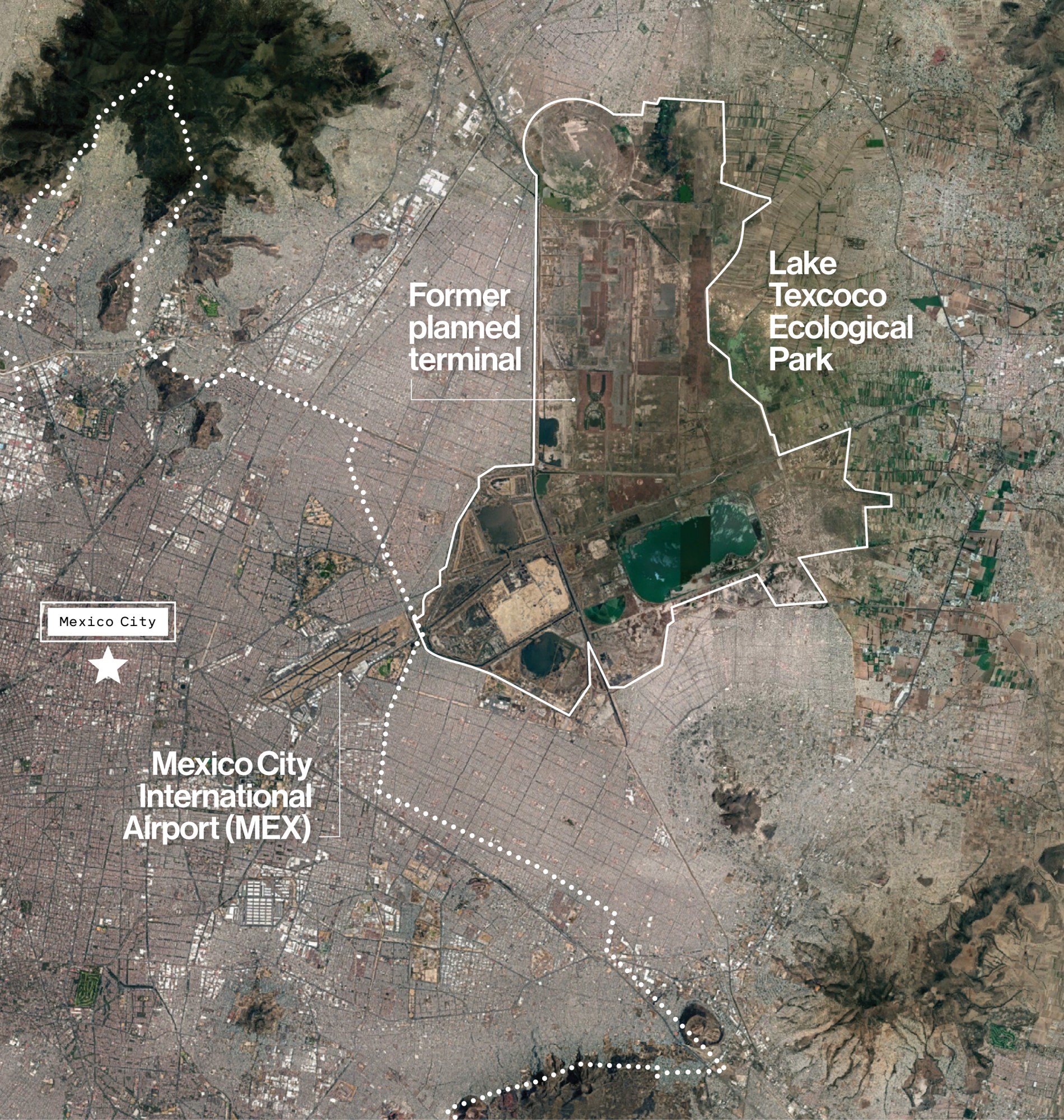 A satellite view of Lake Texcoco Ecological Park, located on the northwest border of Mexico City. Mexican president Andres Manuel Lopez Obrador canceled the airport project in the fall of 2018 while it was in the middle of construction.GOOGLE EARTH, GETTY IMAGES
A satellite view of Lake Texcoco Ecological Park, located on the northwest border of Mexico City. Mexican president Andres Manuel Lopez Obrador canceled the airport project in the fall of 2018 while it was in the middle of construction.GOOGLE EARTH, GETTY IMAGESMore than 40 times the size of New York's Central Park, the undeveloped lake bed that makes up Texcoco Park is most dramatically scarred at its western edge, in an area of around 40 square kilometers where construction of the airport began in 2015. When construction stopped in November 2018, the spider-shaped megastructure fell quickly into ruin. In a site designed by the British architecture firm Foster + Partners to be the Americas' largest airport, the most noticeable features left today are vast chasms in the earth that would have formed the foundations of the main terminal, bordered by steel columns twisting several stories toward the sky.
Across the landscape lie expanses of tezontle rock, a red volcanic gravel that was mined nearby to provide a sturdy substrate for the airport, leaving open wounds in the hills of northern Mexico State. Since the airport's cancellation, countless tons of tezontle have been hauled away from what would have been the airstrip as the area starts to be reshaped back into a wetland.
From the restoration project's outset, says Echeverria, there were signs that a living system lay just under this polluted surface.
A former academic at the University of Pennsylvania Stuart Weitzman School of Design with a reputation for thoughtful writings on green urbanism, Echeverria has sometimes found himself alone amid vast expanses of Texcoco's lake bed, except for the occasional colleague or one of his three children, who like to tag along. He recalls being caught driving a pickup truck through three feet of water as a rainstorm refilled expanses of Lake Texcoco. This is a lake," he says. And it wants to be a lake; it wants to come back."
Sinking cityIn August 2020, Echeverria announced three priorities for the park's construction: building visitor infrastructure, restoring vegetation, and making room for water. When complete, the park will have features like a sports complex and bike trails for the 8.7 million visitors expected each year. So far, these amenities have been the park's most expensive additions, costing $175 million of the $230 million spent, but they will make up just 0.5% of the total park area, estimates Echeverria.
More wide-reaching will be efforts to restore the lake system's vegetation; 1.8 million plants, representing some of the over 200 species of native flora, are currently being grown to re-green the park. Garden stores don't typically sell the halophilic, or salt-loving, vegetation that thrives here, explains Echeverria, so much of what will eventually be planted is now being cultivated in a 10-hectare nursery on site.
Yet perhaps the most dramatic change will be to welcome water back. The project aims to restore the topography and hydrology of the site via vast earthworks and creative recycling of materials left behind by the airport.
Levees of volcanic rock will form the boundaries of seasonal pools, refilled by rainwater and natural flows. Drainage canals that were set to draw surface water away from the airport are being rerouted back to the site. Nine rivers that flow down from the eastern edge of the park will again be allowed to fill areas Lake Texcoco once covered. Through these measures, PELT plans to recover 723 hectares of water systems and reinstate 900 hectares of water bodies, including the northern marshland of Cienega de San Juan as well as the currently dry lakes of Xalapango and Texcoco Norte at the park's edges.
These works should help to address one of Mexico City's biggest challenges: the capital is sinking, and unevenly. It sits atop a vast underground aquifer that has been overexploited to quench the city's thirst, meaning streets in the nearby city center undulate as if built atop a deflating waterbed. Parts of Texcoco Park are sinking at a rate of between 20 and 40 centimeters a year, the fastest anywhere in the city.
Even as the city struggles with too little water underfoot, it must also deal with too much above ground, suffering flooding during storms as a result of the impermeable layers of concrete and asphalt now spread over the former lake bed. Restored pools in Texcoco Park can help prevent flooding in nearby neighborhoods by acting as the city's overflow tank, while water concentrated there can seep back into the aquifers, slowing urban subsidence. Echeverria also plans to rearrange 30-ton, eight-
foot-high precast concrete structures (originally intended to contain the airport's drainage and sewer system) to form a labyrinthine play area for visitors-humans and, he hopes, others.
Echeverria makes clear the park's other benefits: it's expected to significantly improve local air quality, provide over 7,600 jobs, and capture nearly 1.5 million tons of carbon emissions per year. But there is an even greater mission: The real project is a recovery of the entire Mexico Valley basin," he says. [The project] can operate as a proof of concept ... because the whole hydraulic system is connected."
To that end, he's constructing artificial lakes of various depths to create habitats for many species. He aims to restore nesting and overwintering grounds for more than 150 kinds of birds along a migratory corridor from Alaska down to South America.
Early signs look promising. In the years since the airport was canceled, Lake Nabor Carrillo-the oblong vestige of Lake Texcoco that was drained for its construction-has grown blue again, and it's already hosting herons and shorebirds.The terminal's foundations-bounded on the base and sides by concrete-flooded so quickly that it's hard to believe they weren't built to be water tanks, says Echeverria.
New ephemeral ponds rise in the rainy season and fade in the dry. Every water body that we recover becomes an oasis for birds," he says. Two weeks after they filled with some water during the rainy season, we found nine nests in an area of seven hectares."
The site is also changing in ways that are open-ended, creating possibilities for future interpretation, as well as newly emerging issues. The enormous pool that formed in the foundations of the terminal building provided something that did not otherwise exist-a freshwater lake without the salinity of the surrounding landscape. For a while, Echeverria was intrigued by the potential of these freshwater pools to support species like the axolotl, freshwater-dwelling survivors of the wider lake system that now cling on in reserves or captivity. Yet salty water has now crept in, turning it brackish and unsuitable for the sensitive amphibian. It's not possible to re-create Lake Texcoco's marshes exactly as they were, Echeverria explains, nor is it currently possible to dictate precisely how the restoration will end up. I think that one should look at history as a confirmation of what's possible or what's desirable," says Echeverria. But we should not look at it with nostalgia."
Restoration 2.0Eric Higgs, former chair of the US-based Society for Ecological Restoration, explains that exciting creative initiatives like Texcoco Park can also demonstrate the risks that arise as restoration projects move beyond trying to reproduce historic conditions. For decades, Higgs has observed a shift from relatively straightforward classical" restoration ecology to newer forms that began emerging in the mid-2000s.
Perhaps the most crucial change was in how historical knowledge was treated: Restoration 2.0, as he has labeled it, considers a site's history as just one key anchor to be understood alongside other values-ecological and cultural-that can just as powerfully shape a project's design.
This change in approach was driven by necessity. Sometime around 2003, Higgs explains, all hell" began to break loose as the field began to reckon with the fact that some ecosystems are now practically unrestorable, so profoundly have they been altered by the rapidly warming climate, human disturbance, and invasions of alien species.
The Valley of Mexico's lake system has been so widely built over that restoring it in a conventional sense would mean displacing thousands of people, while many fish and birds that flourished around Tenochtitlan are extinct. But others have taken over, with 48 protected species now living in Texcoco Park. Such ecosystems have value. More restoration projects now take that into account, along with services like flood protection and cultural values, including an area's ability to provide livelihoods through important materials, foods, and medicines.
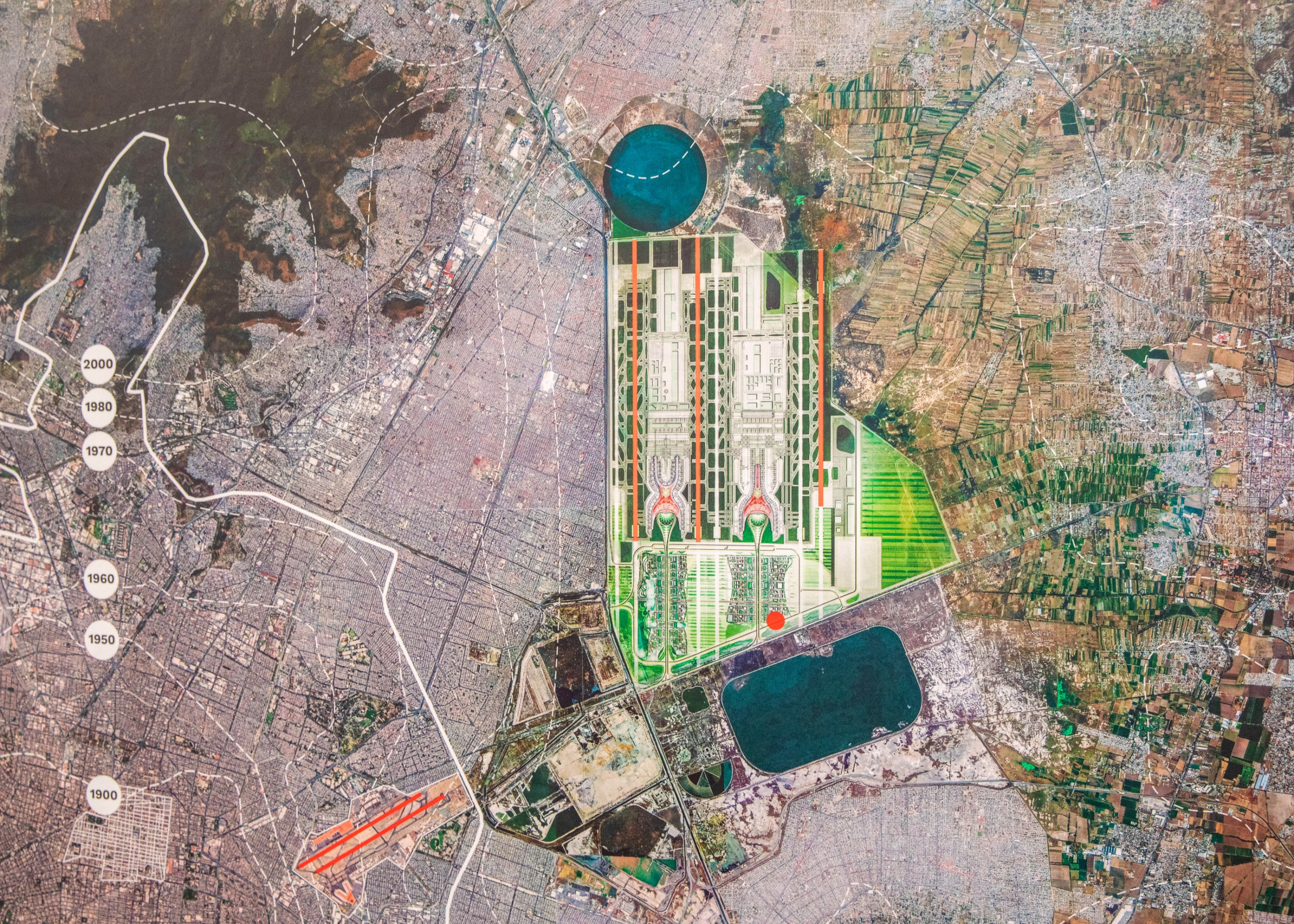 The International Airport of Mexico City would have replaced the existing Mexico City International Airport, shown at lower left.
The International Airport of Mexico City would have replaced the existing Mexico City International Airport, shown at lower left.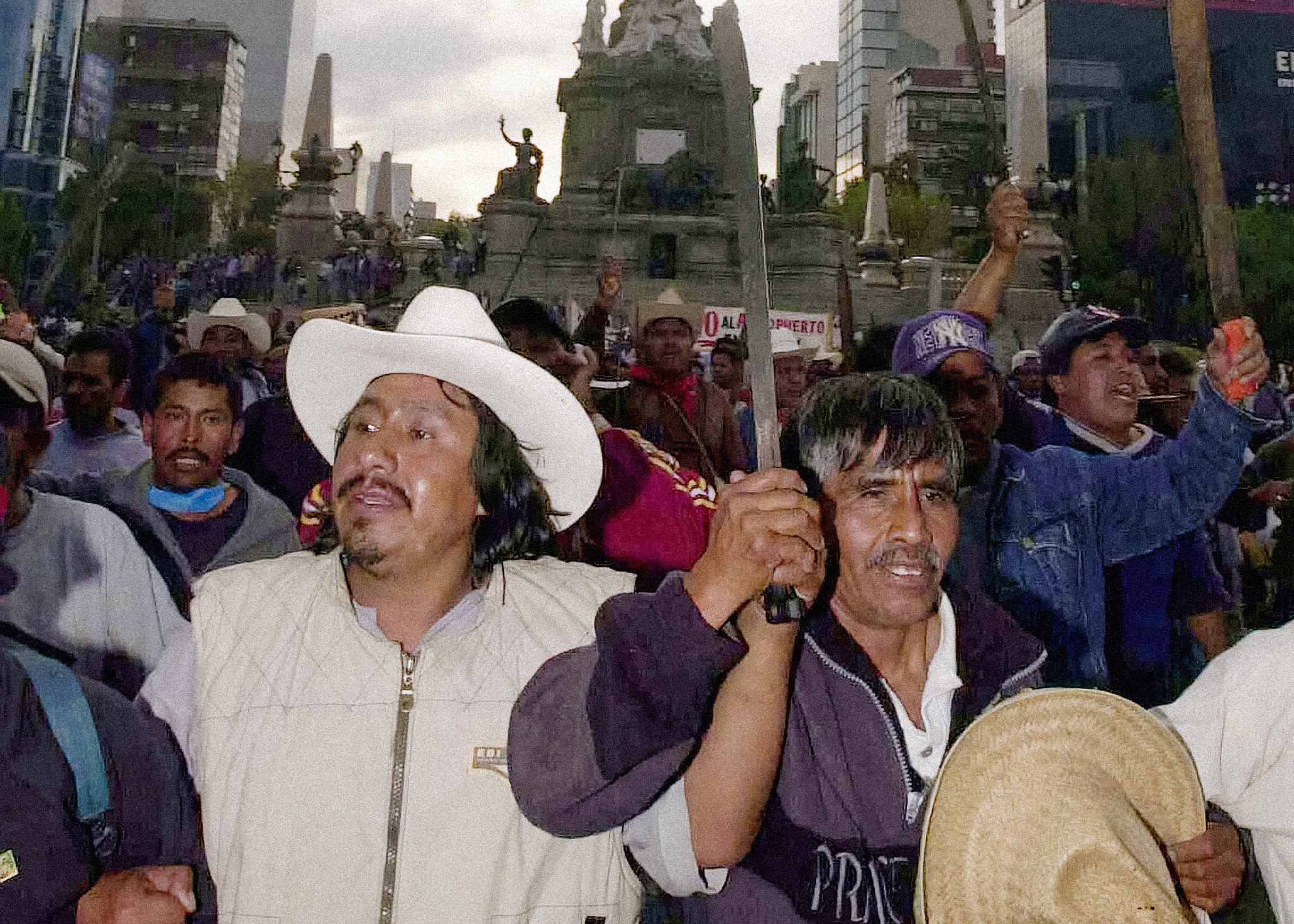 Hundreds of farmers, many wielding machetes, protested against the construction of the new airport in 2001.
Hundreds of farmers, many wielding machetes, protested against the construction of the new airport in 2001.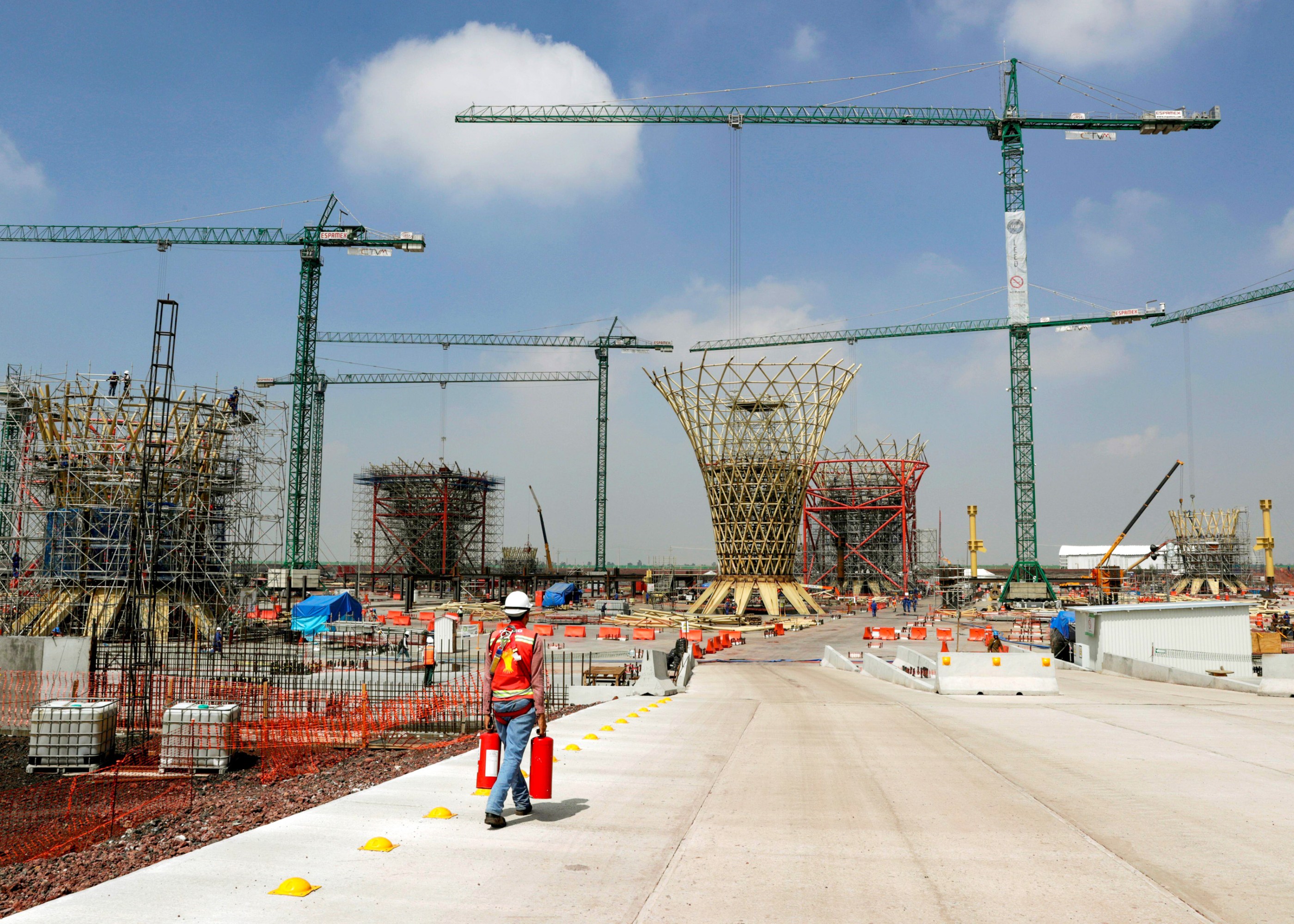 Workers at the main terminalconstruction site in 2018. Thenew project design incorporates thestructures left behind.
Workers at the main terminalconstruction site in 2018. Thenew project design incorporates thestructures left behind.The outcomes of Restoration 2.0 may be more pragmatic in their balance of values. But, Higgs emphasizes, that does not mean that anything goes. Creative projects also need handrails"-guiding principles and goals. Left to their own devices, designers or ecological engineers might come up with a pretty unbridled view of what that place ought to be," he says. So it is vital to anchor the process in consultation, deliberation, conversation, community engagement," he says. It's slow and tedious and sometimes fractious," but it provides a democratic consensus that can foster long-term protection.
Texcoco Park is not the only effort to restore landscapes on a massive scale-there's a 35-year master plan for 47,000 square kilometers of the Everglades in South Florida, for one. But while restoration megaprojects are increasingly common, Texcoco Park is unique for its size and its relevance to a national identity, says environmental historian Laura Martin.
In such culturally important and contested places as this, a park's design cannot be reduced to a technical solution for a city's problems. The People's Front in Defense of the Land (Frente de Pueblos en Defensa de la Tierra, or FPDT)-an organization led by indigenous Nahua farmers from Lake Texcoco's east, among them some of the 1.5 million Nahuatl-speaking descendants of the Mexica who built Tenochtitlan-saw NAICM and the hydraulic system that has drained Lake Texcoco as a modern form of colonialism.
The FPDT has argued that the transformation of environments by designers and engineers can amount to genocide." In 2020, it listed the 17th-century colonial hydraulic engineer Enrico Martinez and NAICM's backers and designers alongside Hernan Cortes in a list of murderers and urban planners who tried to eradicate our way of living with the land, the mountains, and the water."
Lake Texcoco's restoration is by no means immune from the ethical concerns that dogged NAICM. Restoration projects absolutely carry similar risks of exclusionary outcomes as commercial developments," says Martin, whose history of restoration, Wild by Design, explains how both the extermination and the restoration of the bison were means by which white settlers dispossessed Native peoples of their traditional lands and of the animals themselves, a key source of food and hides.
The history of ecological restoration reveals that caring for wild species has often gone hand in hand with harming marginalized people," she says.
A twist on historyEcosystem restoration is increasingly wrestling with projects sitting atop sites that, like Texcoco Park, have already undergone radical changes. Today, such projects' designers are emboldened to delve through the laminations of history" instead of concealing periods when these sites hosted dirty industry and infrastructure, says Higgs. What I'm attracted to ... is this idea that we can understand places as having these complicated histories that require us to unpack them," he says.
Higgs cites Rocky Flats, a nuclear weapons research facility near Denver, which had a history of indigenous stewardship and colonial expropriation followed by a period as a Cold War nuclear arsenal and a radioactively contaminated Superfund site before-billions of dollars later-beginning its afterlife as a National Wildlife Refuge. To see it in any one of those stages is misleading," says Higgs. To say Look at this beautiful wildlife area' without understanding its intricate and layered history makes no sense."
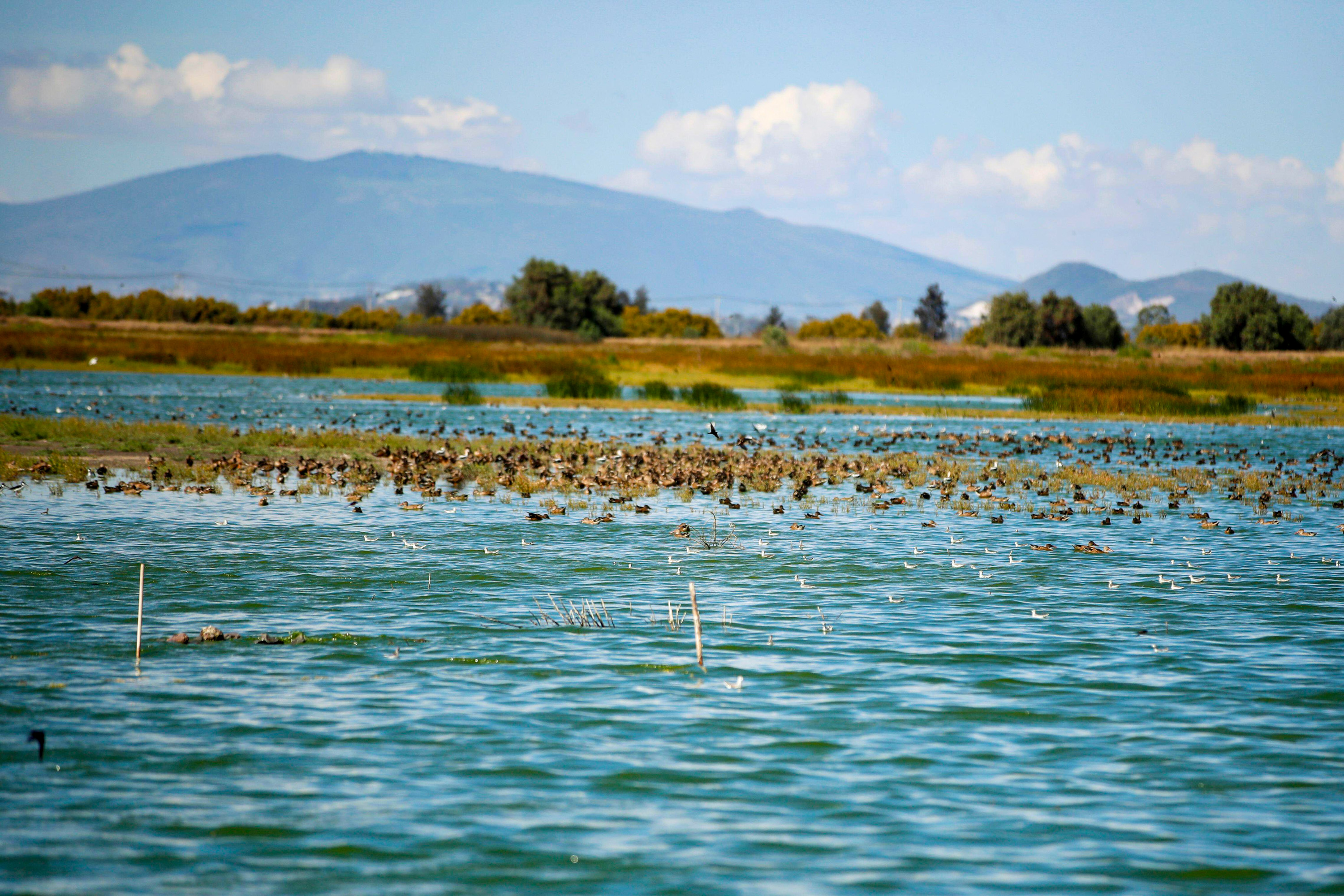 Texcoco, Echeverria has written, acknowledges that making landscape infrastructure is a better way to negotiate the human need for inhabitation."REUTERS/CARLOS JASSO VIA ALAMY
Texcoco, Echeverria has written, acknowledges that making landscape infrastructure is a better way to negotiate the human need for inhabitation."REUTERS/CARLOS JASSO VIA ALAMYWe're now beginning to see the types of bold outcomes that Restoration 2.0 can produce. In the Netherlands, Higgs points to Marker Wadden, a chain of five artificial islands built in the last decade to serve as a bird sanctuary, rising up out of a murky lake that was the unintended result of an aborted land reclamation scheme. The project was conceived by Natuurmonumenten, a Dutch conservation charity, teaming up with the Dutch national forest agency and Boskalis, one of the world's largest dredging companies.
Marker Wadden is an extreme example" in its use of dredging technology to construct an entire archipelago just for birds, Higgs says, but it shows how innovative projects can emerge from a confluence of unusual circumstances."
In the case of Marker Wadden, the project harnesses sediment dredging expertise that the Dutch company developed in its work on shipping canals and instead has directed it toward environmental goals.
I would say that wasn't like a stepwise, really carefully planned, decade-long push to create an artificial archipelago. That wasn't how it started," says Higgs. But weird" combinations of circumstances can come together to bring about that creative Aha!' moment."
Tenochtitlan's past gives clues to how artificial structures can support natural species. For example, chinampas-the lake system's artificial islands, built from reeds-created small canals where species like the axolotl thrived. The core of Mexico City is completely manmade, anchored in just a couple of silt islands," explains anthropologist Gerardo Gutierrez of the University of Colorado, Boulder. Yet even as it has been overlaid with concrete, it has retained surprising biodiversity; 2% of the world's species live within its city limits today.
Since the cancellation of NAICM, communities that surround Lake Texcoco have voiced concerns that restoration efforts would prevent locals' access to the site, and they have demanded the right to continue practices there that they've conducted for generations.
Some continue to dig up tequesquite, a grayish natural mineral salt made up of the salty sediments left on the Texcoco lake bed, while a handful of locals cultivate ahuautle, a type of insect eggs sometimes called Mexican caviar." North of the site, the snail-shaped pond known as El Caracol has at times been employed for salt production and harvesting of spirulina, the now popular superfood" algae that's been gathered in Lake Texcoco's alkaline waters since the time of the Mexica.
The government has begun issuing permits to locals and has promised to allow these practices to continue. In the future, Echeverria says, there is potential to scale these cottage industries-for example, by establishing spirulina farms.
The designer points to successful experiments that are already showing how sustainable economies can be built into restoration projects. The on-site plant nursery is now growing native flora for restoration-and someday, maybe, to sell-while employing local people.
We already have like 70 million pesos ($3.6 million) [worth of] plants in the nursery," says Echeverria. Building it and cultivating them cost just 40 million. So we already have 30 million pesos in plants, which are pure upside, which is amazing after two years."
Livelihoods at stakeTalk to the people who live on the edge of Texcoco Park, and few respond with such optimism.
In March 2022, Mexico's federal government designated Lake Texcoco as a Protected Natural Area, and in June an international coalition recognized it as a Ramsar site, or a wetland of international importance.
Yet heavy-duty construction in Texcoco Park continues, with the project falling far behind the 2022 opening date Echeverria had given when we first spoke in January of that year.
That date was conditional on effects of the covid pandemic, but further delays have resulted from lengthy negotiations with local communities and the unconventional process of building one project and demolishing another on a site that is naturally reflooding. Before Echeverria was appointed, the steel columns bordering the main terminal were sold as scrap to recoup a fraction of the $5 billion spent on the airport's construction. Local media report that these salvage efforts have made achingly slow progress. Meanwhile, efforts to pump all water from the site have halted, causing reflooding.
Today, Texcoco's protected reserve spans an area that was once all part of the lake, from the shantytown of Nezahualcoyotl (named for Lake Texcoco's pre-Hispanic leader and city builder) on the western edge to the eastern ejidos, collectively owned lands that were granted to communities for their support of the Mexican Revolution and are now home to many indigenous people with a strong connection to Lake Texcoco's history.
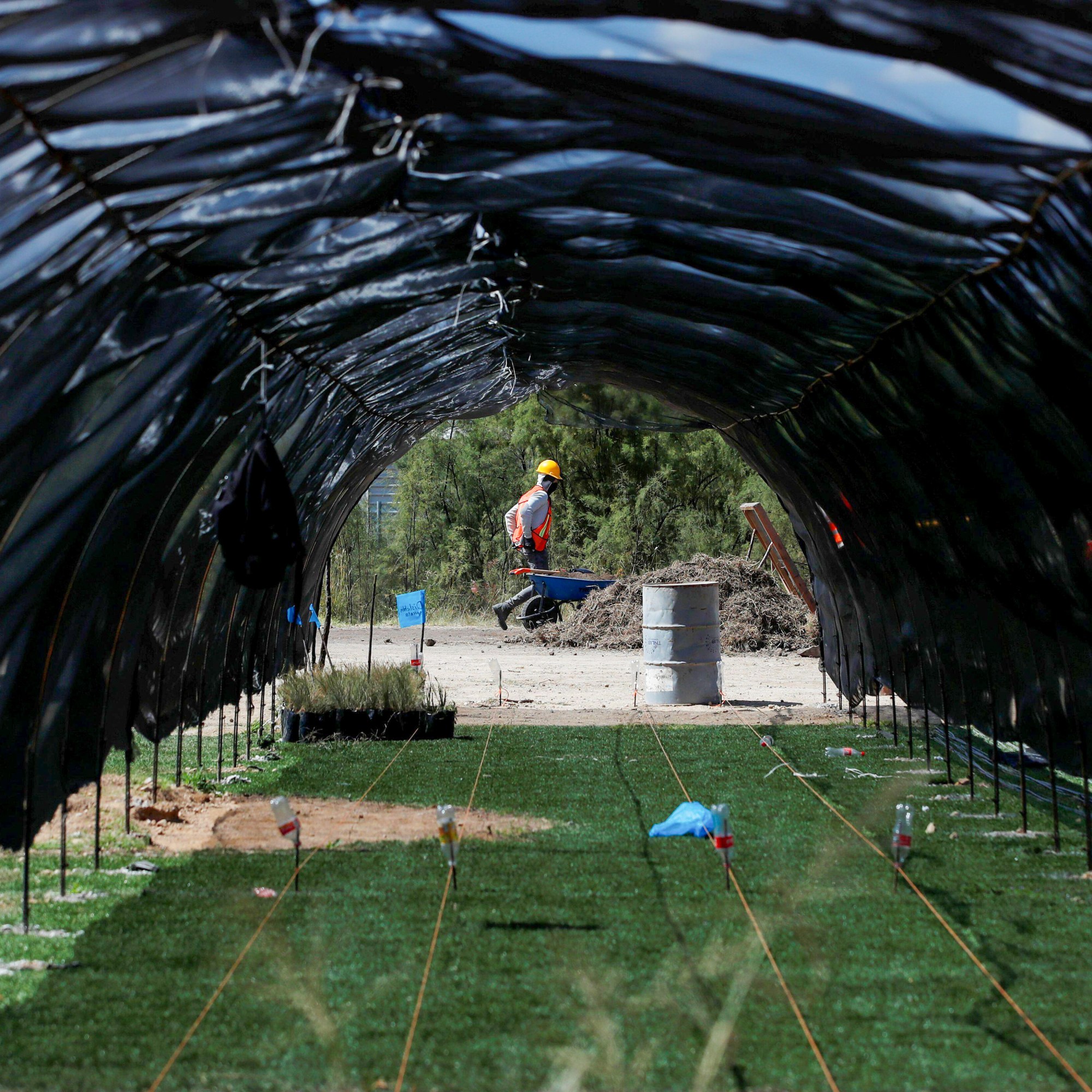
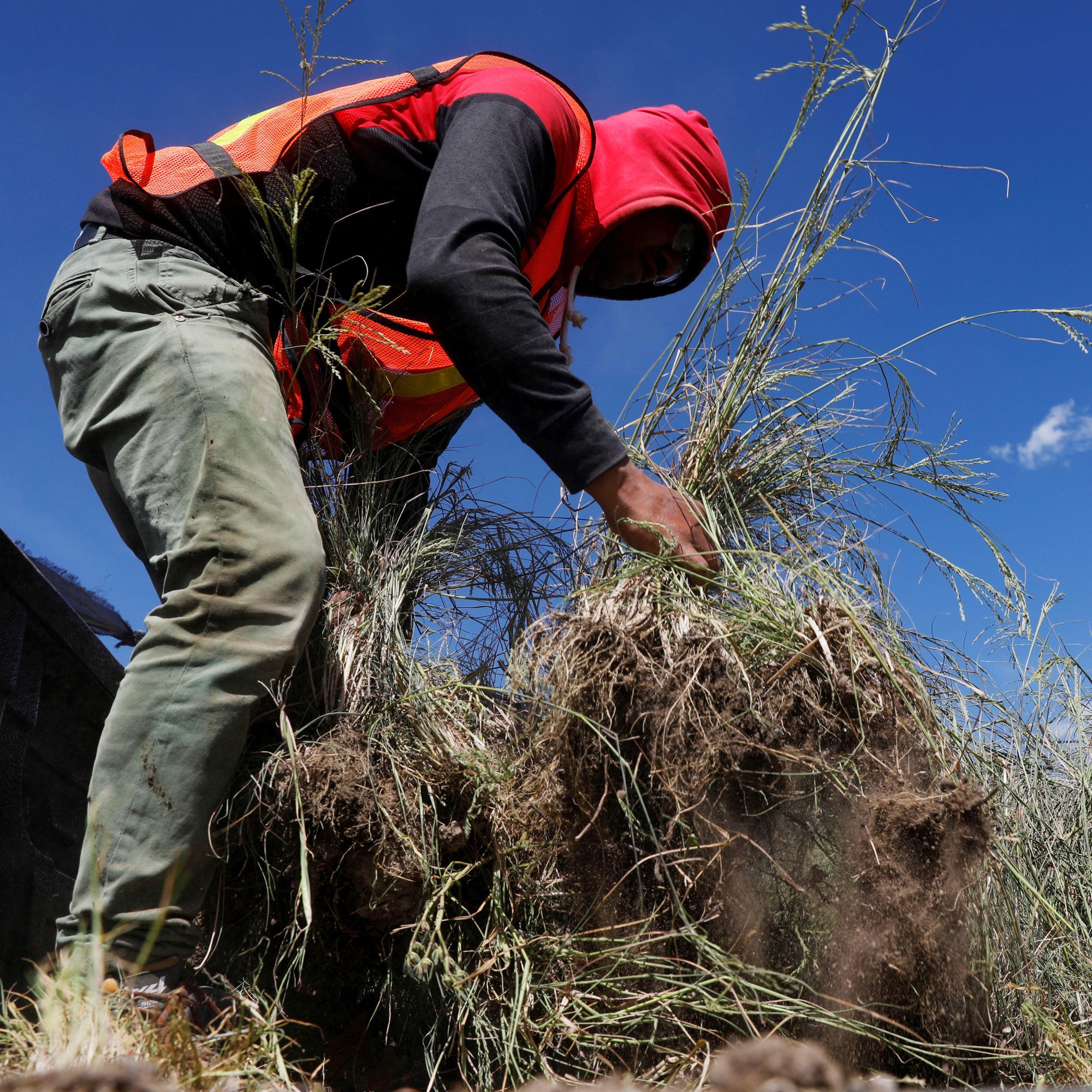
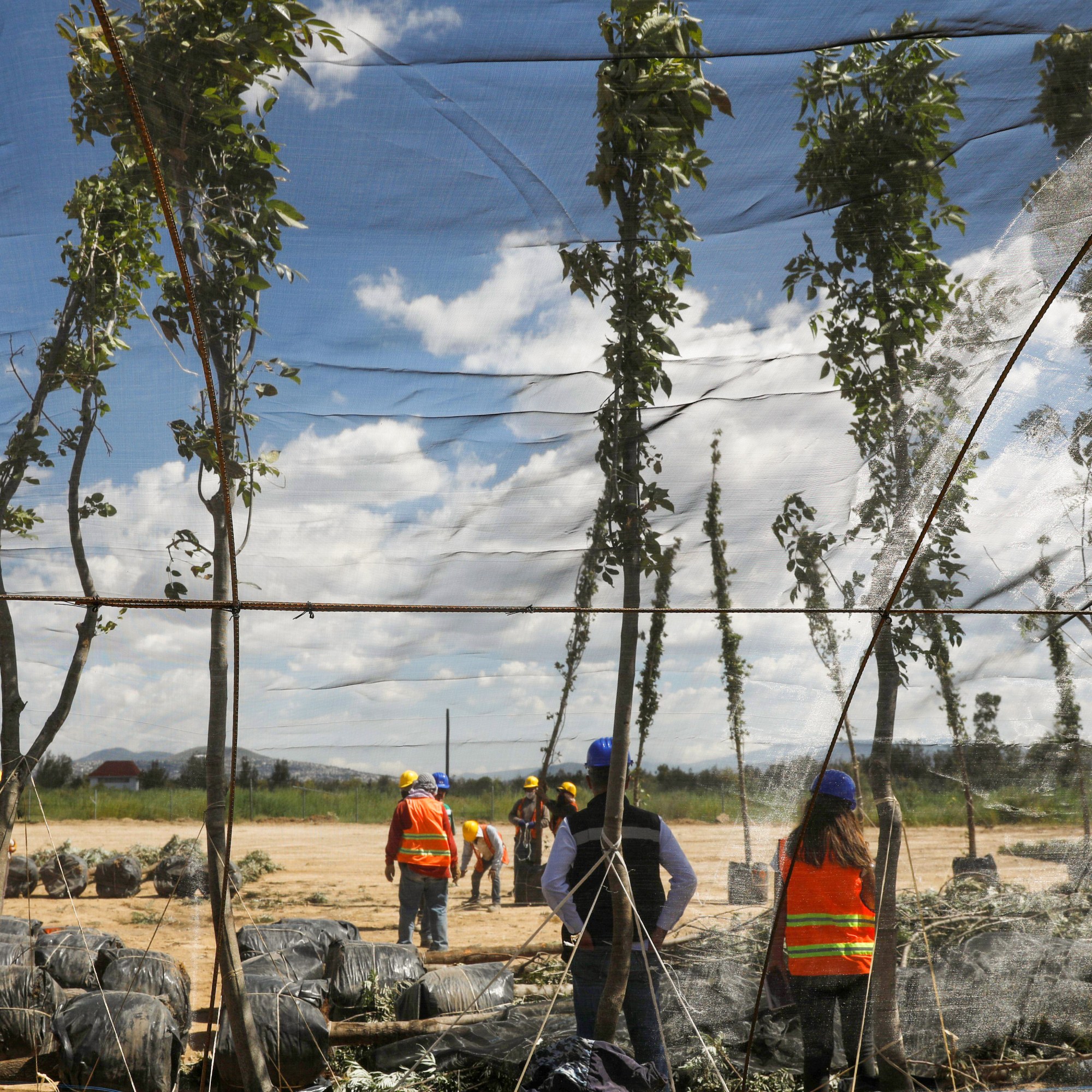
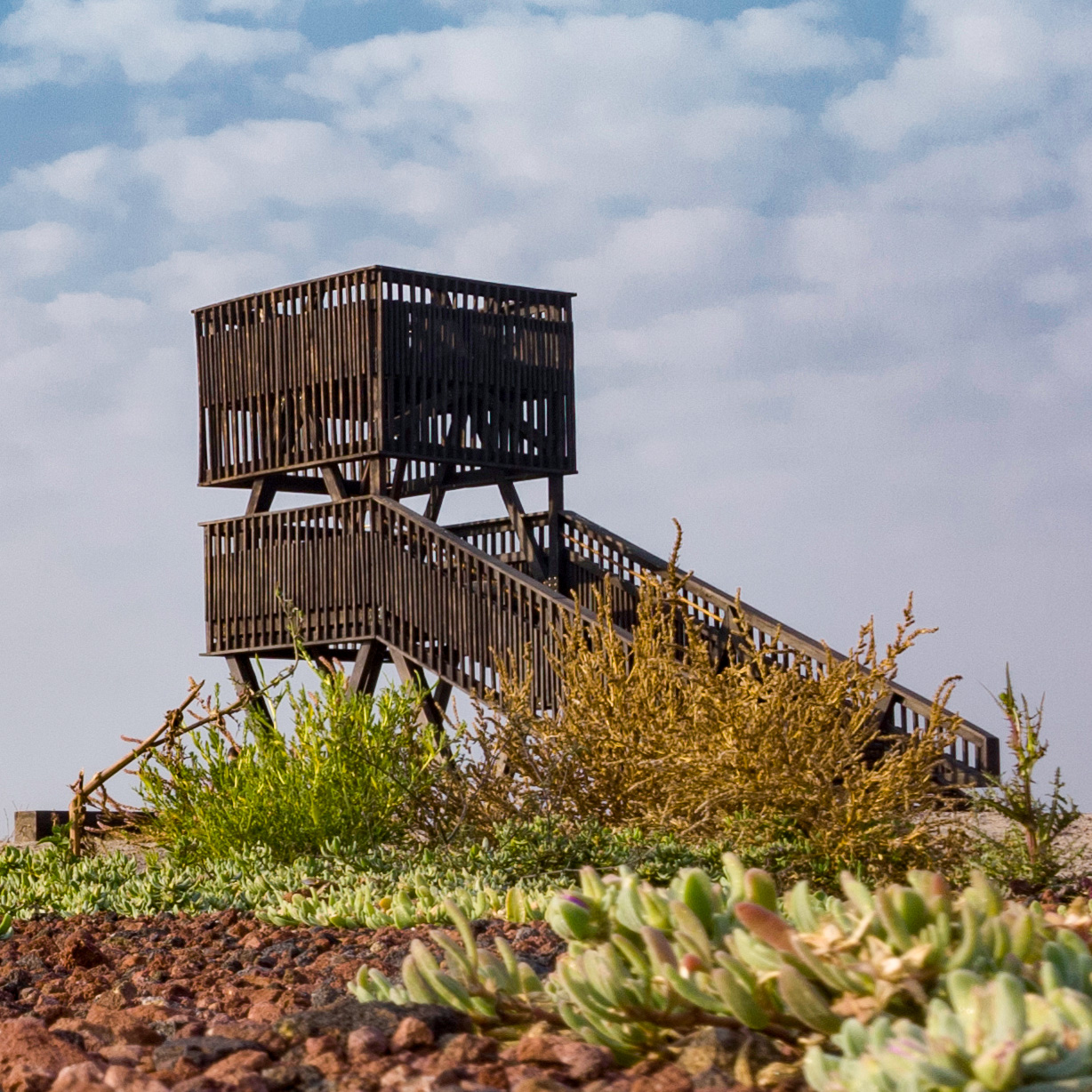
The park is welcoming its first visitors, and wildlife is returning to Lake Texcoco. Millions of native plants are currently being grown to re-green the
park; there's even a platform for birdwatchers.
Ramon Cruces Carvajal, who holds the position of Chronicler for Life of the City of Texcoco, a kind of publicly appointed people's historian, says these areas reflect two types of local responses to Texcoco Park: indifference in the urbanized west and distrust in the agricultural east.
For many, the project's secrecy remains its biggest flaw. Homero Aridjis, widely regarded as Mexico's greatest living poet, who has also led its most influential environmental advocates, the Group of 100, says the park could be a significant achievement." But aside from the occasional promotional video showing drone footage of construction, it's impossible to see what has been done so far, as the public is not allowed access to the site."
Juanita Fonseca, a shorebird specialist at the conservation NGO Manomet, which has worked to restore Texcoco's lakes for migratory birds, echoes this concern, saying that information is confidential and the permissions to access it are limited."
Early in 2022, the announcement of the protected area was delayed amid claims that officials had not adequately consulted local ejidos. These communities have been central to the survival of Lake Texcoco, having fought the development of an airport since the turn of the millennium, when then-president Vicente Fox first proposed one that would have expropriated around 5,000 hectares of land, mainly from ejidos. FPDT, led by indigenous Nahuatl farmers from Lake Texcoco's east, turned out by the hundreds, brandishing machetes, to block these plans. Two FPDT members were killed in 2006 in clashes with government forces.
Today, there is no consensus among these communities. Many demand the return of lands expropriated from the ejidos by the Fox government. Members of the FPDT have supported the restoration, getting involved in government-led consultation and hands-on efforts to revive water systems, with some urging a bigger role for local communities in the park's development as part of a campaign called Manos a La Cuenca" (Hands to the Basin"). As a result of the consultation, an agricultural zone at the park's eastern edge is now legally designated for traditional farming and cannot be urbanized.
Texcoco Park now has the highest form of protection Mexico's federal government can give. But no one believes that this is enough to ensure the reserve's survival, says anthropologist Gabriela Gonzalez, director of the Lake Texcoco Natural Resources Protection Area. [We] can't rely on the declaration of legal status," she says.
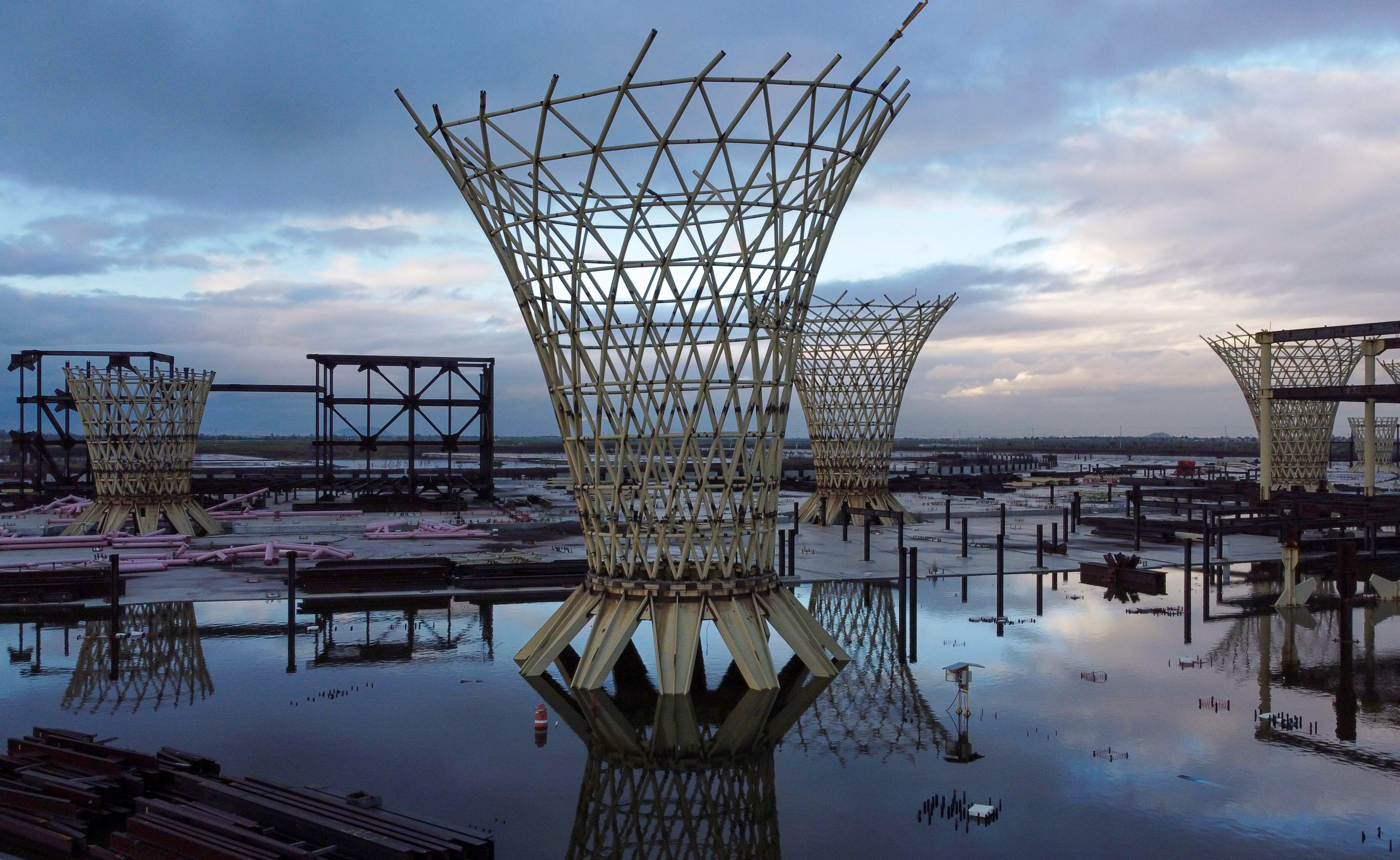 REUTERS/CARLOS JASSO VIA ALAMY
REUTERS/CARLOS JASSO VIA ALAMYIn July 2024, Mexico will elect a new president, who will be free to decide whether or not to support the project. For all the work that has been done, Texcoco Park's future may be uncertain. Lopez Obrador's successor may be keen to see an airport-with its promise of jobs and economic growth-back on the table.
Deadline pressureEcheverria admits that consulting with the public was not my strong point" throughout the park's planning stages. Instead, environment secretary Maria Luisa Albores led the effort to negotiate the terms of the protected area. Although Echeverria accepts that slow-paced process is the most effective way to restore ecosystems, it won't be possible here: We don't have time," he says.
Instead, he explains, he is seizing a once-in-a-lifetime opportunity before it vanishes. In the beginning, we decided-or I decided-to become a machine: just do as much as we can and grow, let's say, beyond a reasonable point of no return" while the park has political support. Meaning," he adds, that we do so much that it will be silly not to continue."
Critics have a more straightforward explanation for the haste and secrecy with which the project has been carried out, citing the increasingly hierarchical and authoritarian nature of Mexican society under Lopez Obrador. To many, the restoration is a political football first and an environmental project second.
Echeverria says the park will open by the end of 2023, to give members of the public a chance to make their own minds up before the next president is elected. He's convinced that visitors will fall in love with what he has glimpsed: a dynamic and self-supporting natural process, with reborn water bodies kick-starting ecological cycles not seen for decades and luring back diverse species.
If enough water can be diverted to the site, he says, it is possible to create a wetland landscape that is still very powerful and still very rich," if not quite the enormous lake it once was.
For now, Texcoco Park is welcoming its first visitors, groups of cyclists and birdwatchers. Echeverria is clear that Texcoco will never become a grand landscaping project like Central Park or the city's own Chapultepec. Today, restored areas remain pinpricks amid the massive landscape. And the vision of this place as a reborn Tenochtitlan is not likely to be fully realized even when it opens at the end of the year; Echeverria likens his work to restorative acupuncture" that he hopes is taken further by locals and successors who will guide the area through a decades-long process of recovery and evolution.
From opening day, Echeverria may have less than a year to build a constituency of supporters on which the project's survival will rest. With so little trust gained so far, a lot is riding on the months ahead. After decades of neglect, many Mexico City residents see this massive landscape as a mysterious wasteland they'd never visit. Echeverria is hoping that when it is opened back up to the public, those who live in this city can once more assume ownership of this place-taking possession in their own way, as societies since the Mexica have done.
He sees the site's restoration as an ecosystem and its return to being part of city life as one and the same-a change in consciousness" to accompany a change in environment. But both transformations will eventually be out of his hands. It's not a project that you start and finish," he says. It's a living process. It has to be always growing and always evolving."
Matthew Ponsford is a freelance reporter based in London.